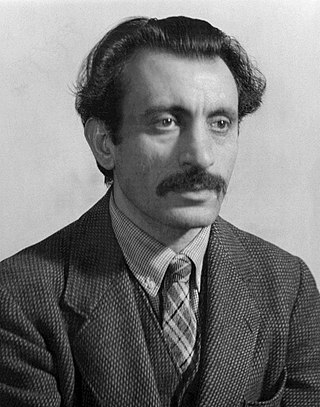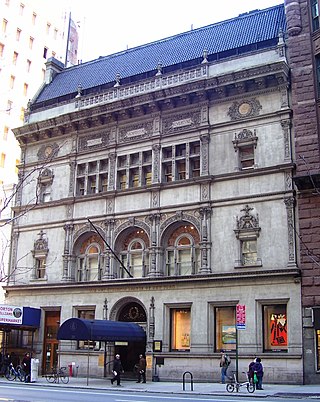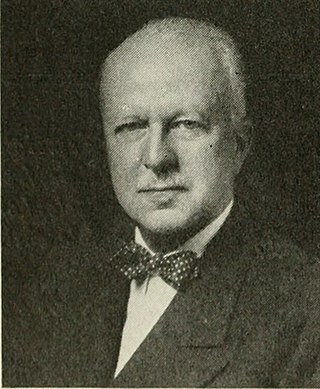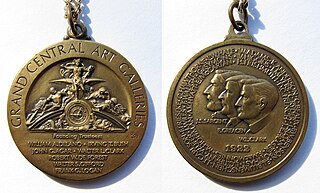Related Research Articles

John Singer Sargent was an American expatriate artist, considered the "leading portrait painter of his generation" for his evocations of Edwardian-era luxury. He created roughly 900 oil paintings and more than 2,000 watercolors, as well as countless sketches and charcoal drawings. His oeuvre documents worldwide travel, from Venice to the Tyrol, Corfu, Spain, the Middle East, Montana, Maine, and Florida.
Abstract expressionism is a post–World War II art movement in American painting, developed in New York City in the 1940s. It was the first specifically American movement to achieve international influence and put New York at the center of the Western art world, a role formerly filled by Paris.
Events from the year 1904 in art.

Arshile Gorky was an Armenian-American painter who had a seminal influence on Abstract Expressionism. He spent the last years of his life as a national of the United States. Along with Mark Rothko, Jackson Pollock and Willem de Kooning, Gorky has been hailed as one of the most powerful American painters of the 20th century. The suffering and loss he experienced in the Armenian genocide had crucial influence at Gorky’s development as an artist.

William Adams Delano, an American architect, was a partner with Chester Holmes Aldrich in the firm of Delano & Aldrich. The firm worked in the Beaux-Arts tradition for elite clients in New York City, Long Island and elsewhere, building townhouses, country houses, clubs, banks and buildings for colleges and private schools. Moving on from the classical and baroque Beaux-Arts repertory, they often designed in the neo-Georgian and neo-Federal styles, and many of their buildings were clad in brick with limestone or white marble trim, a combination which came to be their trademark.

The Art Students League of New York is an art school at 215 West 57th Street in Manhattan, New York City, New York. The League has historically been known for its broad appeal to both amateurs and professional artists.

Ethel Kremer Schwabacher was an influential abstract expressionist painter, represented by the Betty Parsons Gallery in the 1950s and 1960s. She was a protégé and first biographer of Arshile Gorky, and friends with many of the prominent painters of New York at that time, including Willem de Kooning, Richard Pousette-Dart, Kenzo Okada, and José Guerrero. She was also the author of a monograph on the artist John Ford and a memoir, "Hungry for Light".
Edmund William Greacen (1876–1949) was an American Impressionist painter. His active career extended from 1905 to 1935, during which he created many colorful works in oil on canvas and board. One of his works, a reproduction of which is at the Smithsonian Institution, was awarded the Salmagundi Club's Samuel T. Shaw Prize in 1922. In addition to his work as an artist, Greacen also founded, ran and taught in New York City's Grand Central School of Art for more than 20 years.

Walter Sherman Gifford was best known as the president of the AT&T Corporation from 1925 to 1948, after which he served as United States Ambassador to the United Kingdom from 1950 to 1953.

Walter Leighton Clark (1859–1935) was an American businessman, inventor, and artist based in Stockbridge, Massachusetts and New York City.

The Grand Central Art Galleries were the exhibition and administrative space of the nonprofit Painters and Sculptors Gallery Association, an artists' cooperative established in 1922 by Walter Leighton Clark together with John Singer Sargent, Edmund Greacen, and others. Artists closely associated with the Grand Central Art Galleries included Hovsep Pushman, George de Forest Brush, and especially Sargent, whose posthumous show took place there in 1928.

The Newark Metropolitan Airport Buildings are at Newark Liberty International Airport in Newark, New Jersey. Newark Metropolitan, opened in 1928, was the first major airport in the United States. The trio of Art Deco buildings, the Administration Building, Brewster Hangar and the Medical Building, were built in 1934 and dedicated by Amelia Earhart in 1935. They were added to state and federal registers of historic places in 1980. In 2001, the Administration Building was relocated when a runway was lengthened, and they have subsequently been renovated. The terminal was once adorned with murals by Arshile Gorky, only two of which survive and are part of the Newark Museum collection.
Corinne Michelle West (1908–1991) was an American painter; she also used the names Mikael and Michael West. She was an Abstract Expressionist.
Matthew Spender is an English sculptor. He is the author of From a High Place: A Life of Arshile Gorky (1999), a biography of his father-in-law, the artist Arshile Gorky, and A House in St John's Wood (2015), about his father, the poet Stephen Spender. He also wrote Within Tuscany: Reflections on a Time and Place

Anna Walinska was an American painter. She is known for her colorful works of the Modernist period, collages done with handmade Burmese Shan paper, and a large body of works in various media on the theme of the Holocaust. Works by Walinska are included in numerous public collections, most notably the National Portrait Gallery, the National Museum of Women in the Arts, the Smithsonian American Art Museum, the United States Holocaust Memorial Museum, the Rose Art Museum at Brandeis University, the Denver Art Museum, The Jewish Museum in New York, the Herbert F. Johnson Museum of Art at Cornell, the Zimmerli Art Museum at Rutgers University, the Judah L. Magnes Museum in Berkeley, and Yad Vashem. Walinska's scrapbooks of the Guild Art Gallery, along with sketchbooks and journals on world travel are included in the Archives of American Art at the Smithsonian Institution.
The American pavilion is a national pavilion of the Venice Biennale. It houses the United States' official representation during the Biennale.

Grand Central Terminal is a major commuter rail terminal in Midtown Manhattan, New York City, serving the Metro-North Railroad's Harlem, Hudson and New Haven Lines. It is the most recent of three functionally similar buildings on the same site. The current structure was built by and named for the New York Central & Hudson River Railroad, though it also served the New York, New Haven and Hartford Railroad. Passenger service has continued under the successors of the New York Central and New Haven railroads.
Molly Guion was an American portrait painter. She taught at the Art Students League of New York.
Allan Barry Stone (1932-2006) was an American art dealer, gallerist and collector. He was the founder of Allan Stone Gallery, which showcased contemporary art for over five decades.
Hayden Herrera is an American author and historian. Her book Frida: A Biography of Frida Kahlo was turned into a movie in 2002 and Herrera's biography Arshile Gorky: His Life and Work was named a finalist for the 2004 Pulitzer Prize for Biography or Autobiography.
References
- ↑ "400 Enroll in 6 Weeks; Grand Central School of Art Announces List of Instructors". The New York Times . November 23, 1924. Retrieved November 18, 2018.
- ↑ "Painters and Sculptors' Gallery Association to Begin Work". The New York Times . December 19, 1922. Retrieved November 18, 2018.
- ↑ "Terminal Fire Not in Art School". The New York Times . September 6, 1929. Retrieved November 18, 2018.
- ↑ "New Art School Opens: Reception Held in Studios Over the Grand Central". The New York Times . October 2, 1924. Retrieved November 18, 2018.
- ↑ "Art Activities Here, at Home, and Out of Town; In Massachusetts. In Connecticut. In Vermont. In Pennsylvania. The Carnegie International". The New York Times . September 16, 1928. Retrieved November 18, 2018.
- ↑ "About ICAA - Institute of Classical Architecture & Art".
- ↑ University of Illinois (Urbana-Champaign campus) College of Fine and Applied Arts (1950). University of Illinois Exhibition of Contemporary American Painting. University of Illinois Press. p. 155.
- ↑ J. Marshall Guion (IV) (1976). Descendants of Louis Guion, Huguenot, of La Rochelle, France and New Rochelle, West Chester County, Province of New York: A Guion Family Album, 1654 to 1976. Guion. Retrieved 4 September 2020.

